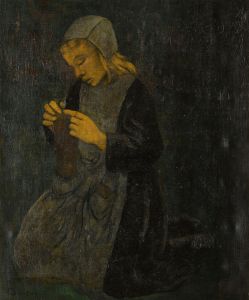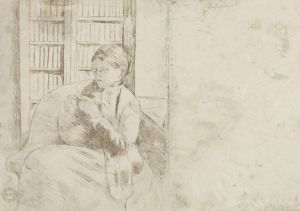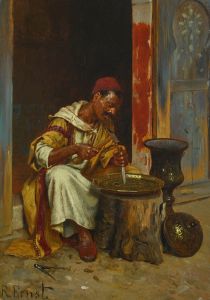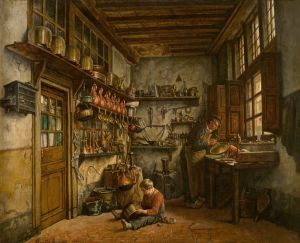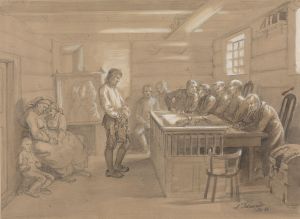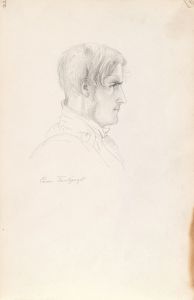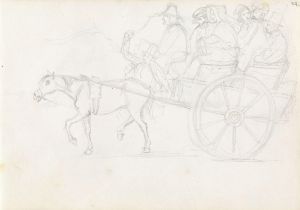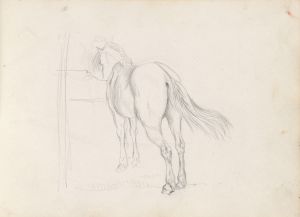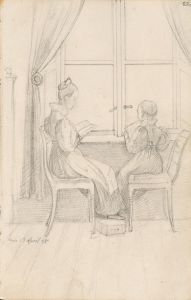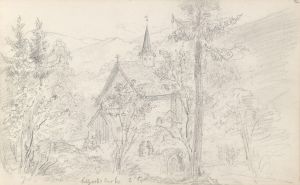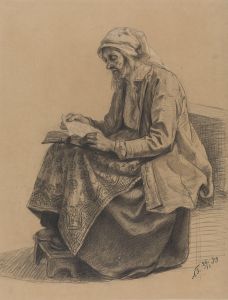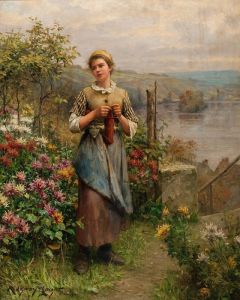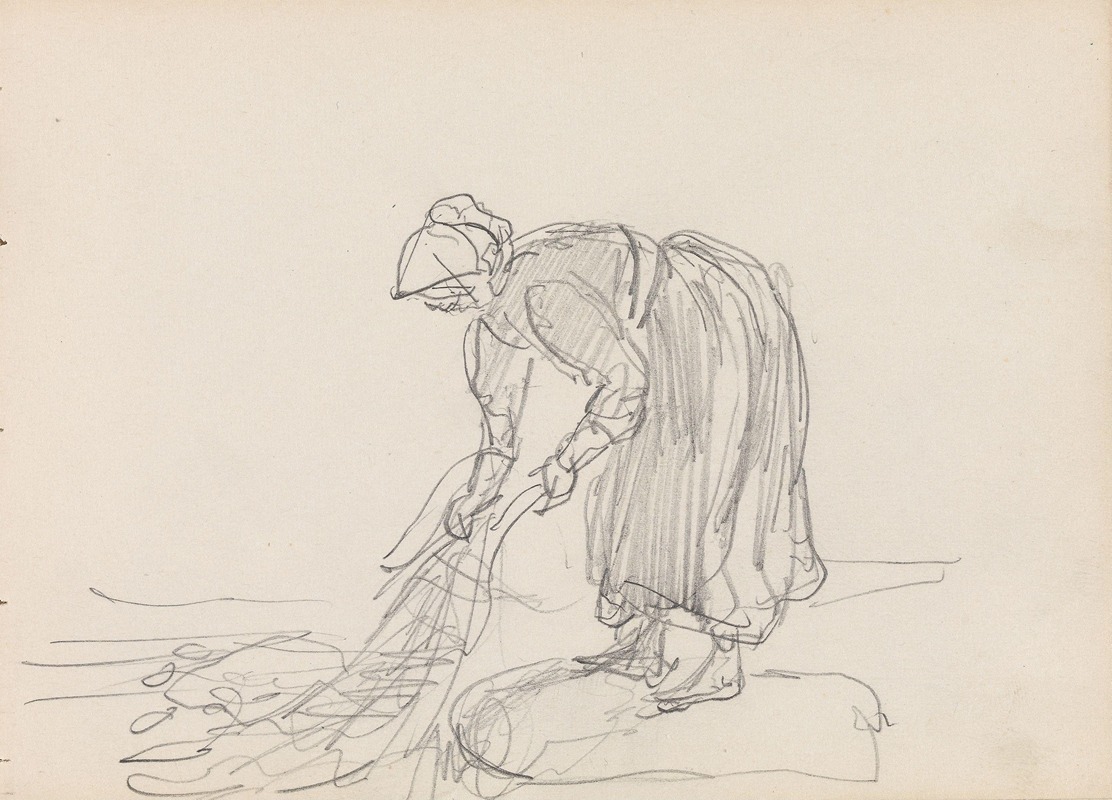
Kvinne som trekker garn
A hand-painted replica of Adolph Tidemand’s masterpiece Kvinne som trekker garn, meticulously crafted by professional artists to capture the true essence of the original. Each piece is created with museum-quality canvas and rare mineral pigments, carefully painted by experienced artists with delicate brushstrokes and rich, layered colors to perfectly recreate the texture of the original artwork. Unlike machine-printed reproductions, this hand-painted version brings the painting to life, infused with the artist’s emotions and skill in every stroke. Whether for personal collection or home decoration, it instantly elevates the artistic atmosphere of any space.
Adolph Tidemand was a prominent Norwegian painter in the 19th century, known for his detailed and realistic depictions of Norwegian folk life and traditions. One of his notable works is "Kvinne som trekker garn," which translates to "Woman Spinning Yarn." This painting is a fine example of Tidemand's focus on rural life and his ability to capture the essence of Norwegian culture during his time.
"Kvinne som trekker garn" portrays a woman engaged in the traditional activity of spinning yarn, a common domestic task in rural Norway. This subject matter reflects Tidemand's interest in documenting the everyday lives of Norwegian people, particularly those living in the countryside. His works often highlight the customs, costumes, and environments that were typical of 19th-century Norway, providing a visual record of a way of life that was rapidly changing due to industrialization and modernization.
Tidemand's painting style is characterized by its attention to detail and realistic representation. In "Kvinne som trekker garn," he uses a naturalistic approach to depict the textures of the woman's clothing, the spinning wheel, and the surrounding interior. The careful rendering of light and shadow adds depth to the scene, creating a sense of intimacy and immediacy. This meticulous attention to detail is a hallmark of Tidemand's work and contributes to the historical value of his paintings.
The cultural significance of "Kvinne som trekker garn" lies in its portrayal of a traditional craft that was an integral part of Norwegian domestic life. Spinning yarn was not only a practical activity but also a social one, often carried out in groups where women would gather to work and converse. By capturing this moment, Tidemand preserves a piece of cultural heritage, offering insight into the daily lives and social structures of rural Norway.
Adolph Tidemand was part of the Düsseldorf School of painting, a group of artists who were known for their detailed and realistic style. He studied at the Academy of Fine Arts in Copenhagen and later in Düsseldorf, where he developed his distinctive approach. Tidemand's works are celebrated for their ethnographic accuracy and artistic quality, and they played a significant role in shaping the national identity of Norway during the 19th century.
"Kvinne som trekker garn" is one of many paintings by Tidemand that focus on Norwegian folk themes. His collaboration with fellow artist Hans Gude on works such as "Bridal Procession on the Hardangerfjord" further cemented his reputation as a leading figure in Norwegian art. Tidemand's paintings are held in high regard and are part of several important collections, including the National Gallery in Oslo.
In summary, "Kvinne som trekker garn" by Adolph Tidemand is a significant work that captures the essence of Norwegian rural life in the 19th century. Through his detailed and realistic portrayal of a woman spinning yarn, Tidemand offers a glimpse into the cultural and social practices of the time. His work remains an important part of Norway's artistic heritage, celebrated for its historical accuracy and artistic merit.





